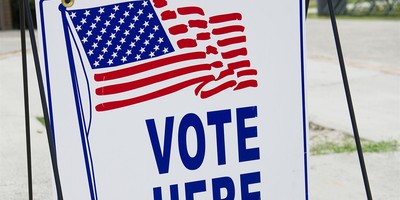The Republican Party is no longer near-monochromatic. For strictly political reasons alone, this is good news for the GOP. By about 2040, whites will be outnumbered by the aggregate number of African-, Latino- and Asian-Americans.
For Democrats, this demographic shift once would have been welcome political news, since minorities – especially African-Americans – were considered among their most reliable voters.
No longer: This week, roughly twice as many blacks voted Republican as in 2008. Latino Republican voters also increased, albeit more modestly. Slowly but with deliberate intentionality, the Grand Old Party is succeeding in breaking the hold of the Democratic Left on persons of color.
The progress is not rapid enough, but it is unmistakable and growing.
This is chilling to those on the Democratic side terrified by the notion of a multi-hued Republican Party. It was out of a sense of political fear that Bill Clinton, under the auspices of President Obama, pled with Florida Democratic Senate candidate Kendrick Meek to withdraw from his race in order to prevent the election of Marco Rubio, an electrifying candidate of Cuban heritage. Rubio’s ascendancy represents the new reality that people of color are being actively welcomed into the Republican Party.
With this said, the more important point is this: Republicans should solicit minority voters for one primary reason: because it is the right thing to do. All citizens, regardless of color, are American. They deserve full participation in the Party of Lincoln, Theodore Roosevelt and Ronald Reagan. Their interests are American interests: strong families; a vibrant and virtuous culture; an economy whose growth is rooted not in some sudden, massive infusion of federal cash but private-sector, open-market innovation and competition; lower taxes, a limited federal government and a contracting national debt; and an opportunity-rich society where the American Dream is a realistic attainment.
Recommended
The African-American scholar Shelby Steele has explained why, for too long, blacks gravitated to the Democratic Party. “Precisely because Republicans cannot easily pander to black grievance, they have no need to value blacks only for their sense of grievance. Unlike Democrats, they can celebrate what is positive and constructive in minority life without losing power.”
Perhaps we can hope, realistically, that the pandering of which Professor Steele writes is losing its appeal to African-Americans who, having weighed the artifice of the Democratic Left and found it wanting, are taking a fresh look at voting for candidates who represent their genuine and longer-term interests – the interests common to every citizen of our country.
Among Latino- and Asian-Americans, the dynamics are different. Many are first- or second-generation immigrants and have perspectives on the magic of America to which Republicans should appeal. And as for the ravaging debate on illegal immigration, as Marco Rubio has put it, Republicans “should be the pro-legal immigration party, not the anti-illegal immigration party.”
Language counts and helps frame good law and sound policy. Rubio, and growing numbers of his Republican peers, get this.
Following is a partial list of Republicans who, as elected leaders, demonstrate that the “next GOP” will be wonderfully color-filled. To those who believe no race or ethnicity should be the hereditary province of any party, it is a coat whose colors are many, making it all the more fully American.
U.S. Senate Marco Rubio – Florida
U.S. House (congressional districts noted)
Francisco Canseco – Texas 23
Lincoln Diaz-Ballart – Florida 21
Mario Diaz-Ballart – Florida 25
Bill Flores – Texas 17
Jaime Herrera – Washington 3
Raul Labrador – Idaho 1
Devin Nunes – California 21
David Rivera – Florida 25
Ileana Ros-Lehtinen – Florida 18
Tim Scott – South Carolina 1
Lt. Col. (ret) Allen West – Florida 22
Governor
Nikki Haley – South Carolina
Bobby Jindal – Louisiana
Brian Sandoval – Nevada
Susan Martinez – New Mexico
Lt. Governor
Jennifer Carroll – Florida
























Join the conversation as a VIP Member